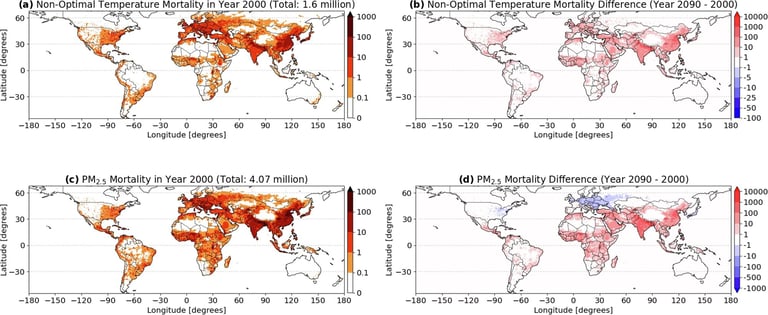Study Warns: Climate Change to Cause 30 Million Deaths Annually by Century's End
November 21, 2024
In high-income regions like Western Europe and North America, temperature-related deaths are expected to exceed those from air pollution, a trend already observed in countries such as the United States and France.
This shift in mortality risk is anticipated to extend to Central and Eastern Europe, as well as parts of South America, indicating a growing public health concern.
Significant regional differences are anticipated, with South and East Asia experiencing the largest increases in mortality due to aging populations and persistent air pollution.
Researchers emphasize that climate change poses a direct threat to public health, necessitating immediate mitigation measures to prevent future loss of life.
In 2000, there were approximately 1.6 million deaths annually due to extreme temperatures, which could rise to 10.8 million by the century's end.
Annual deaths from air pollution were around 4.1 million in 2000, projected to increase to 19.5 million by the end of the century, marking a five-fold rise.
The study underscores the importance of recognizing climate change as a critical public health issue that requires decisive global action.
Pollution-related deaths are expected to increase five-fold, while temperature-related mortality could rise seven-fold, significantly impacting about 20% of the global population.
The study utilized advanced numerical simulations and analyzed data from 2000 to 2090 in ten-year intervals, highlighting alarming trends in mortality rates.
A recent study led by the Max Planck Institute for Chemistry projects that by the end of the century, annual mortality linked to air pollution and extreme temperatures could reach a staggering 30 million.
Summary based on 2 sources
Get a daily email with more Climate change stories
Sources

Phys.org • Nov 20, 2024
Climate change and air pollution could risk 30 million lives annually by 2100
ScienceDaily • Nov 20, 2024
Climate change and air pollution could risk 30 million lives annually by 2100